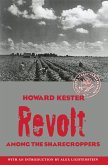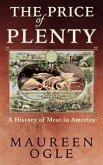A sweeping, 400year history of American slavery and American capitalism told through the emergence, evolution, and persistence of the plantation.
We imagine the plantationthe big house, the porticos, the slave quarters, the vast cotton fieldsas situated firmly in the dismal American past. Yet as historian Daniel Rood shows in In the Shadow the Great House, the plantation is still very much with us today. Opening with the origins of the plantation on the tiny sugarproducing island of São Tomé in the 1500s, Rood then brings us to North America, and traces, in succession, the establishment of tobacco plantations in Virginia, rice plantations in the Carolina Low Country, and cotton plantations in the Deep South. He rewrites our understanding of these phenomena, showing, with uncommon precision, how enslaved people built the American landscape even as they suffered under a brutal labor regime. He then moves to the postslavery era, demonstrating that the plantation evolved into agribusiness, chicken farming, and other developments we usually associate with modern capitalism. Drawing surprising connections between past and present, Rood argues that the plantation was, and in many respects remains, the engine of American progress.
We imagine the plantationthe big house, the porticos, the slave quarters, the vast cotton fieldsas situated firmly in the dismal American past. Yet as historian Daniel Rood shows in In the Shadow the Great House, the plantation is still very much with us today. Opening with the origins of the plantation on the tiny sugarproducing island of São Tomé in the 1500s, Rood then brings us to North America, and traces, in succession, the establishment of tobacco plantations in Virginia, rice plantations in the Carolina Low Country, and cotton plantations in the Deep South. He rewrites our understanding of these phenomena, showing, with uncommon precision, how enslaved people built the American landscape even as they suffered under a brutal labor regime. He then moves to the postslavery era, demonstrating that the plantation evolved into agribusiness, chicken farming, and other developments we usually associate with modern capitalism. Drawing surprising connections between past and present, Rood argues that the plantation was, and in many respects remains, the engine of American progress.
Dieser Download kann aus rechtlichen Gründen nur mit Rechnungsadresse in A, D ausgeliefert werden.









